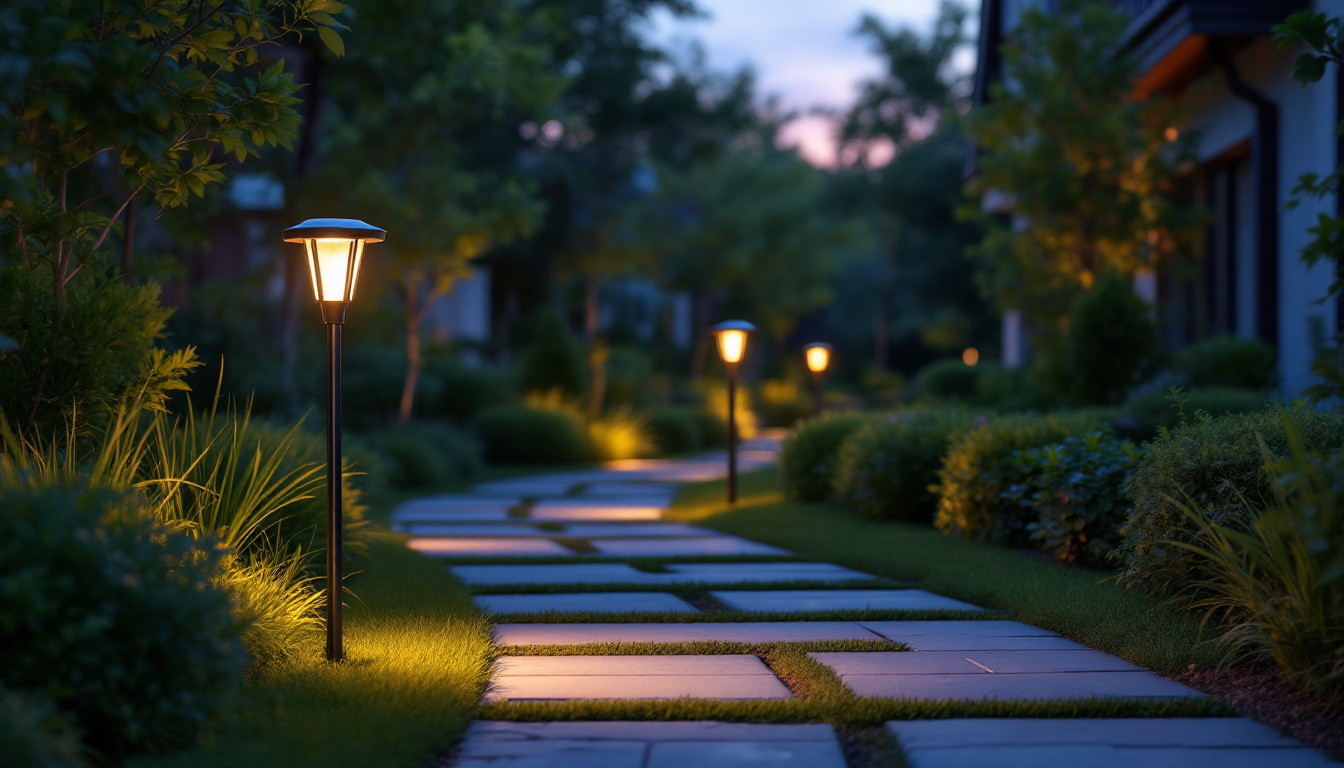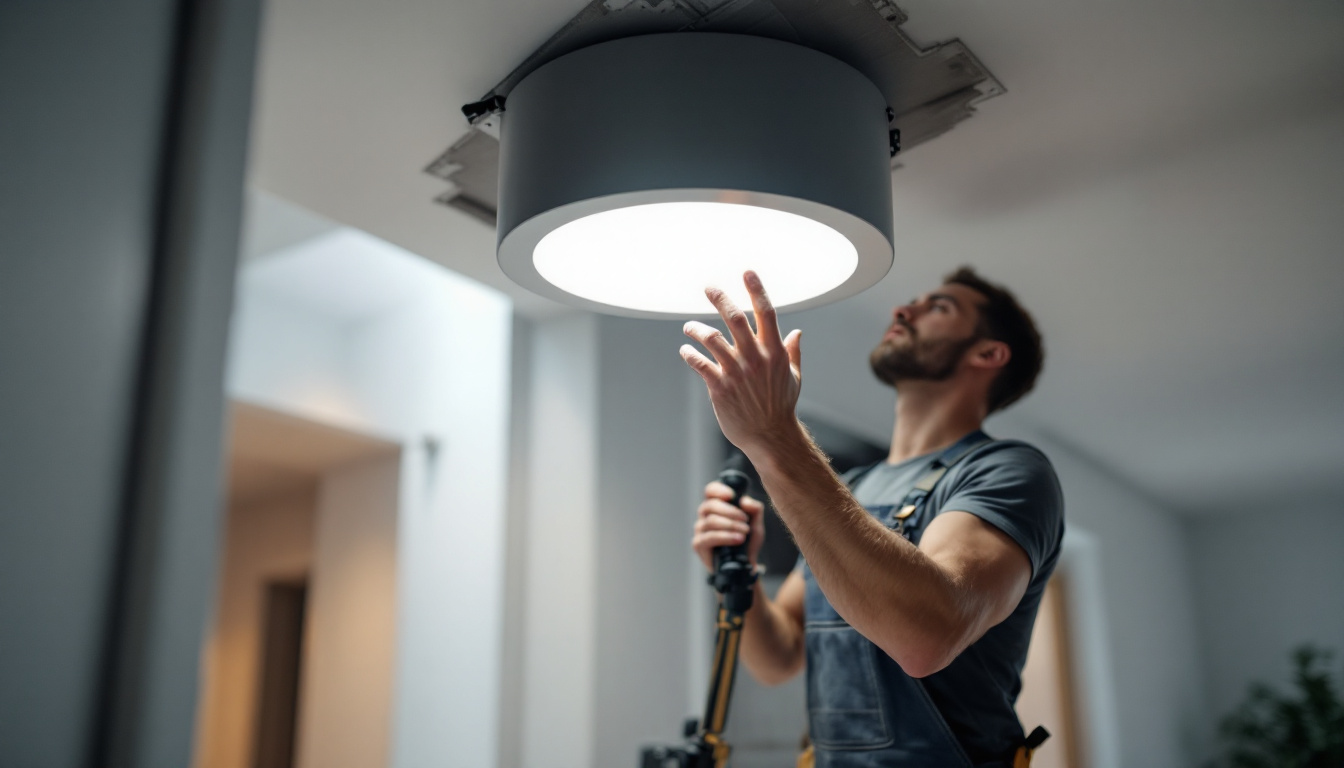
In the rapidly evolving world of lighting technology, LED supplies have emerged as a cornerstone for both residential and commercial projects. This article delves into the insights shared by expert lighting contractors, providing valuable information on the latest trends, best practices, and the future of LED lighting solutions.
LED technology has transformed the lighting industry, offering energy-efficient solutions that significantly reduce electricity consumption. As more contractors embrace this innovative technology, understanding its advantages and applications becomes crucial.
One of the most compelling reasons for the rise of LED lighting is its energy efficiency. Compared to traditional incandescent and fluorescent bulbs, LEDs consume far less power while providing the same or even greater illumination. This efficiency translates into lower energy bills for clients and a reduced carbon footprint, aligning with the growing demand for sustainable building practices.
Moreover, LEDs have a longer lifespan, with many products rated for over 25,000 hours of use. This longevity not only reduces the frequency of replacements but also minimizes waste, making LEDs an environmentally friendly choice. In addition to their durability, LEDs are also made from materials that are less harmful to the environment compared to their predecessors. For instance, they do not contain toxic substances like mercury, which is commonly found in fluorescent bulbs, thereby reducing the risk of environmental contamination during disposal.
LEDs offer unparalleled versatility in design, allowing contractors to explore creative lighting solutions. From residential spaces to commercial environments, LEDs can be integrated into various fixtures, including recessed lighting, track lighting, and decorative lamps. This adaptability enables contractors to meet diverse client needs while enhancing the aesthetic appeal of any space.
Furthermore, advancements in LED technology have led to the development of smart lighting systems that can be controlled remotely. This feature adds another layer of convenience and customization, appealing to tech-savvy clients looking for modern solutions. Smart LEDs can be programmed to change colors, dim, or even synchronize with music, creating dynamic atmospheres for events or everyday living. The integration of sensors and automation also allows for energy savings by ensuring lights are only on when needed, further emphasizing the efficiency of LED technology.
Additionally, the ability to customize lighting with LEDs extends beyond mere aesthetics. With tunable white LEDs, users can adjust the color temperature to suit different times of day or activities, promoting well-being and productivity. For example, cooler light can enhance focus during work hours, while warmer tones can create a cozy ambiance for relaxation in the evening. This level of personalization not only meets the functional needs of clients but also contributes to their overall comfort and satisfaction in their spaces.
With a plethora of LED products available on the market, selecting the right supplies for a project can be daunting. Expert lighting contractors emphasize the importance of understanding product specifications and performance metrics to make informed decisions.
When evaluating LED products, lumens and watts are critical metrics that contractors must consider. Lumens measure the brightness of a light source, while watts indicate energy consumption. Unlike traditional bulbs, which often equate higher wattage with greater brightness, LEDs provide more lumens per watt, making it essential to focus on lumens for effective lighting solutions.
For instance, a 10-watt LED bulb can produce the same amount of light as a 60-watt incandescent bulb, showcasing the efficiency of LED technology. Contractors should educate their clients about these metrics to help them make better choices regarding their lighting needs. Furthermore, understanding the specific lighting requirements of different spaces can guide contractors in selecting the appropriate LED products. For example, task lighting in kitchens or workspaces may require higher lumens for visibility, while ambient lighting in living areas may benefit from softer, lower-lumen options that create a cozy atmosphere.
Another important aspect to consider is color temperature, measured in Kelvin (K). This metric determines the warmth or coolness of the light emitted by an LED. For example, a lower Kelvin rating (around 2700K) produces a warm, inviting glow, ideal for residential settings, while a higher rating (5000K or more) emits a cooler, daylight-like light, suitable for commercial spaces.
Additionally, the Color Rendering Index (CRI) is a crucial factor that measures how accurately a light source displays colors compared to natural light. A higher CRI rating (above 80) is generally preferred for environments where color accuracy is vital, such as art studios or retail spaces. In these settings, the ability to see colors as they truly are can significantly impact the overall aesthetic and functionality. For instance, in a clothing store, accurate color representation can influence customer purchasing decisions, making it essential for retailers to invest in high-CRI LED lighting. Moreover, understanding how different color temperatures and CRI ratings interact can help contractors create tailored lighting designs that enhance the mood and functionality of various environments.
Proper installation is key to maximizing the benefits of LED lighting. Expert contractors share essential best practices that can enhance performance and longevity while ensuring client satisfaction.
Choosing the right fixtures for LED installations is fundamental. Not all fixtures are designed to accommodate LED technology, and using incompatible fixtures can lead to poor performance or even damage to the LEDs. Contractors should ensure that the fixtures are rated for LED use and that they provide adequate ventilation to prevent overheating.
Additionally, dimmable LEDs require compatible dimmer switches. Contractors must verify that the dimmers are designed for LED technology to avoid flickering or reduced lifespan. Educating clients about the importance of proper fixture selection can lead to better overall performance and satisfaction. Furthermore, considering the aesthetic appeal of the fixtures can enhance the overall ambiance of a space. Selecting fixtures that complement the interior design not only improves functionality but also elevates the visual experience, making the lighting an integral part of the decor.
When installing LED lighting, attention to wiring and electrical considerations is paramount. LEDs operate on low voltage, and improper wiring can lead to inefficiencies or safety hazards. Contractors should ensure that the electrical system is compatible with the LED fixtures being installed.
Moreover, using quality connectors and ensuring secure connections can prevent issues such as voltage drop, which can affect the brightness and performance of the LEDs. Taking the time to address these electrical considerations can save contractors and clients from future headaches. Additionally, implementing a well-planned circuit layout can optimize the distribution of power and reduce the risk of overload. Contractors should also consider the potential for future upgrades or expansions, ensuring that the wiring can accommodate additional fixtures or changes in technology without requiring a complete overhaul of the existing system.
While LEDs are known for their longevity, regular maintenance and troubleshooting are still essential to ensure optimal performance. Expert contractors share insights into effective maintenance practices that can prolong the life of LED systems.
Dust and debris can accumulate on LED fixtures, diminishing their brightness and efficiency. Regular cleaning is crucial to maintain optimal performance. Contractors recommend using a soft, dry cloth to wipe down fixtures and avoid harsh chemicals that could damage the surface.
Additionally, periodic inspections can help identify potential issues before they escalate. Contractors should check for signs of wear, loose connections, or any flickering lights, addressing these problems promptly to maintain the integrity of the lighting system.
Even with high-quality LED products, issues can arise. Common problems include flickering lights, dimming, or complete failure. Contractors should be prepared to troubleshoot these issues effectively. For flickering lights, checking the compatibility of dimmer switches and ensuring secure connections can often resolve the problem.
If an LED bulb fails, it’s essential to check the power supply and wiring for any faults. Educating clients on basic troubleshooting techniques can empower them to address minor issues independently, enhancing their overall experience with LED lighting.
The future of LED lighting is bright, with continuous advancements in technology and design. Expert contractors are optimistic about the direction the industry is heading, particularly in terms of innovation and sustainability.
As smart home technology becomes more prevalent, the integration of LED lighting with smart systems is expected to grow. Contractors are increasingly incorporating smart controls that allow clients to manage their lighting through smartphones or voice commands. This level of control not only enhances convenience but also promotes energy savings through automated scheduling and dimming features.
Moreover, the ability to customize lighting scenes and moods through smart technology adds a new dimension to interior design, allowing clients to create the perfect ambiance for any occasion.
Research and development in LED technology continue to yield exciting advancements. Future products are expected to offer even greater energy efficiency and improved color rendering capabilities. As manufacturers invest in innovation, contractors can look forward to a wider range of high-performance LED options that cater to diverse client needs.
Additionally, the emergence of organic LEDs (OLEDs) and other next-generation technologies promises to revolutionize the industry further, offering even more possibilities for creative lighting solutions.
LED supplies have transformed the landscape of lighting, offering energy-efficient, versatile, and sustainable solutions for contractors and clients alike. By understanding the intricacies of LED technology, from product selection to installation and maintenance, lighting contractors can enhance their expertise and provide exceptional service.
As the industry continues to evolve, staying informed about the latest trends and advancements will be crucial for contractors looking to remain competitive. Embracing the future of LED lighting not only benefits contractors but also contributes to a more sustainable and energy-efficient world.
Ready to elevate your lighting game with the latest LED technology? LumenWholesale is here to support your journey towards brighter, more sustainable lighting solutions. Our commitment to providing spec-grade lighting products at unbeatable wholesale prices ensures that you can light up any space with confidence. Say goodbye to inflated markups and hello to a vast selection of reliable, high-performance lighting that meets the highest industry standards. Plus, with free shipping on bulk orders, you’re guaranteed premium lighting at the best value. Don’t compromise on quality or cost. Wholesale Lighting at the Best Value is just a click away. Transform your lighting projects with LumenWholesale today.

Discover innovative strategies and proven techniques for lighting contractors to enhance outdoor spaces with contemporary solar path lights.

Discover essential tips and common mistakes to avoid when installing recessed lighting housing.

Discover essential tips and innovative strategies for lighting contractors to master the art of wraparound lighting.

Discover essential tips for illuminating your screened porch with string lights without breaking the bank.